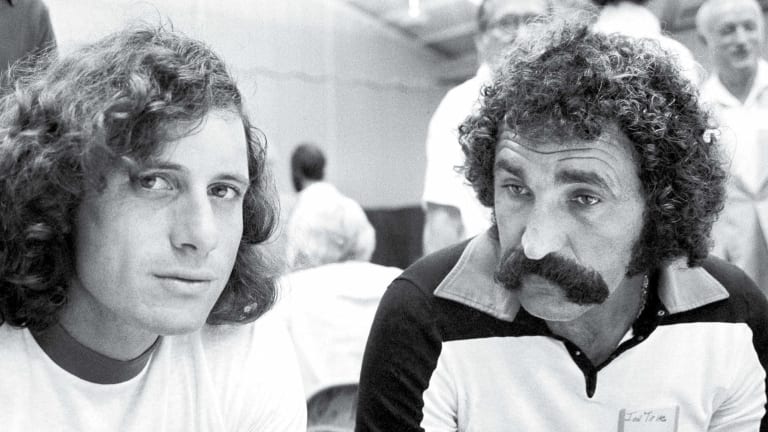It’s the face. When they talk about Ion Tiriac, they always talk about the face. He first entered tennis at the dawn of the Open Era, a Romanian former ice hockey player blowing into the sport like a searing, malevolent wind out of the mysterious and threatening Communist east.
The Face of Ion Tiriac
By May 03, 2016Betting Central
Line Calls, presented by FanDuel Sportsbook: WTA Mutua Madrid Open Betting Preview
By Apr 23, 2024Lifestyle
Without a driver's license, what will Elena Rybakina do with the Stuttgart Porsche?
By Apr 23, 2024Pop Culture
How does Taylor feel about Taylor? Fritz speaks on his appreciation for Swift
By Apr 23, 2024Pop Culture
Novak Djokovic named Laureus World Sportsman of the Year for a fifth time
By Apr 22, 2024Pop Culture
Josh O’Connor channels Nick Kyrgios in ‘Challengers’ movie with co-star Zendaya
By Apr 22, 2024Social
Darwin Blanch, 16, has hilarious reaction to drawing Rafael Nadal at Mutua Madrid Open
By Apr 22, 2024Style Points
Leylah Fernandez joins Canadian Olympians to unveil the country's Lululemon Paris outfits
By Apr 22, 2024Social
Simona Halep says her body 'needs a little more time to be ready' before more tournament play
By Apr 21, 2024Pop Culture
Eugenie Bouchard thrilled to meet 'the new tennis queen' Zendaya at 'Challengers' Los Angeles afterparty
By Apr 21, 2024The Face of Ion Tiriac
After 50 years, Ion Tiriac is still making things happen.
Published May 03, 2016

The Face of Ion Tiriac
Advertising
Advertising

The Face of Ion Tiriac